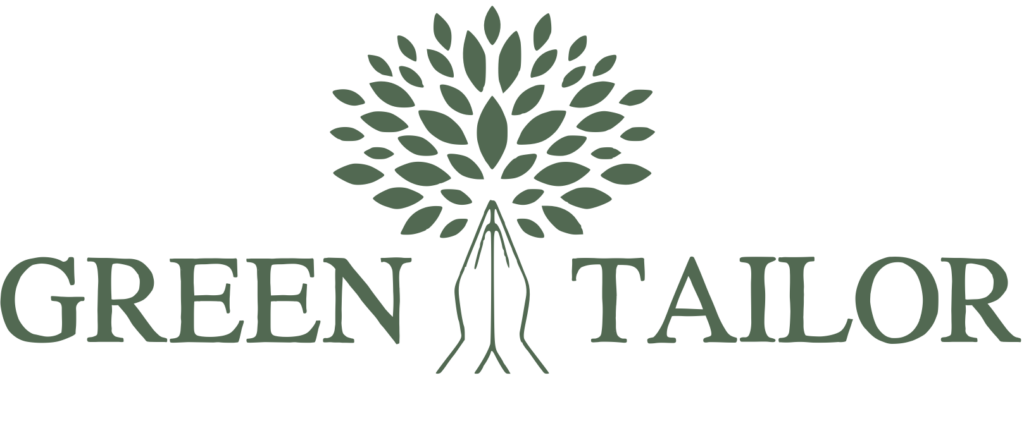Linen is such an old fabric in the world, yet it is loved today for its excellent qualities. It is light and breathable. Linen has been used for thousands of years by people, but nowadays it has largely been replaced by synthetic materials because they are mass-produced, less expensive, easily accessible, and wrinkle-free.
However, some textile enthusiasts still prefer using natural fabrics—and we are part of them!. Linen is gaining popularity yet again. The fabric is safe for you and also better for the environment. In fact, it is a great choice for people with allergies or sensitive skin.
What is linen fabric?
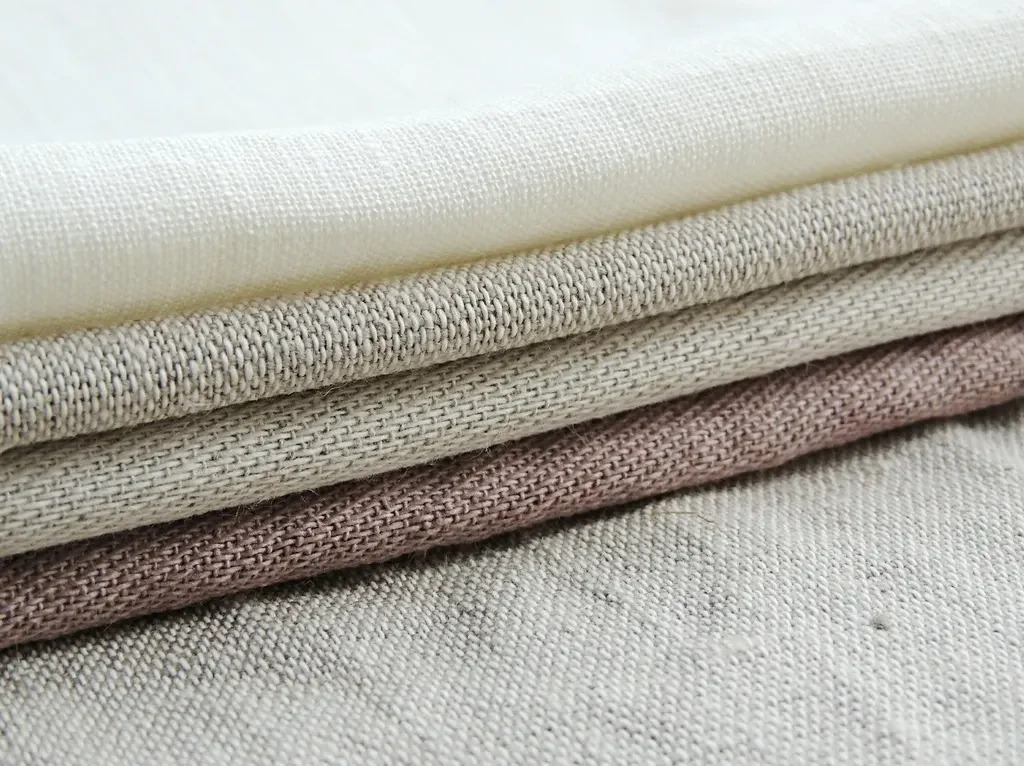
Linen is a natural fabric made from the fibers of the flax plant. As the fibers are made from the stem of the plant, they are very strong and biodegradable. It keeps you cool and fresh on hot days.
Top flax-producing countries and the eco-friendly nature of linen
Most of the world’s flax fiber production, around 80% to 85%, comes from Western European countries such as France, Belgium, Ireland, the Netherlands, and Spain. These regions have a long history and ideal conditions for cultivating high-quality flax.
In addition to Western Europe, other important linen producers include Lithuania, Egypt, Russia, and China, which contribute significantly to the global linen market.
The flax plant needs low maintenance, as it typically doesn’t need irrigation, pesticides, or fertilizers to grow each year. This makes it an environmentally friendly crop that can actually improve soil quality over time.
How is pure linen fabric made?
Linen, made through a natural process, offers comfort and long-lasting quality. A step-by-step guide is explained below.

Growing the flax plant
As the flax plant produces linen, it is grown in cool and damp climates. Flax grows quickly and doesn’t require much water or any pesticides.
Harvesting
Usually, after 100 days, flax is ready, and it is pulled from the ground. We don’t need to cut to keep fibers long and strong.
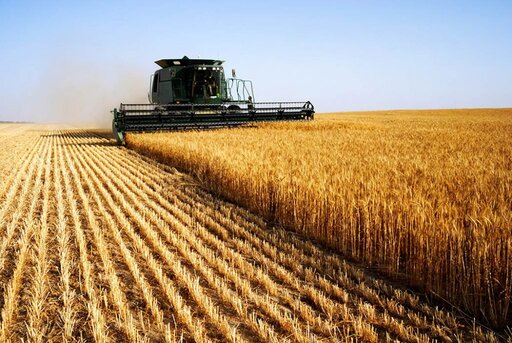
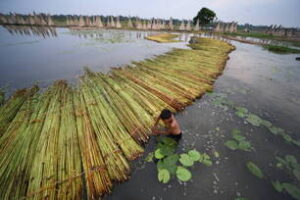
Retting
After the flax plants are harvested, the stems still have a tough outer layer. To get the soft, useful fibers from inside the stems, we need to loosen or break down the outer part. This helps separate the usable fibers inside the stem.
Breaking and Scutching
The dry stalks are crushed to remove the woody part of the stem by using rollers or wooden tools. This breaks the stems into small pieces. Then the broken woody bits are scraped off. This step is called scutching. Whatever was left were the long, soft flax fibers, which are what we use to make linen.
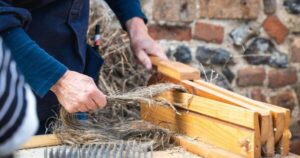
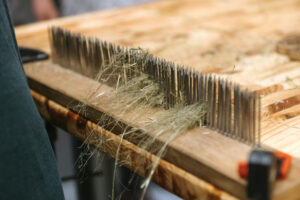
Hackling
The fibers are combed to remove any remaining rough bits. This makes a straight, smooth fabric that can be spun.
Spinning
The fibers are spun into yarn. This yarn can be thick or fine, depending on how it will be used.
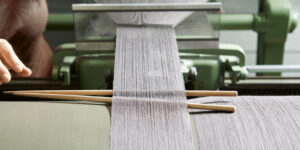
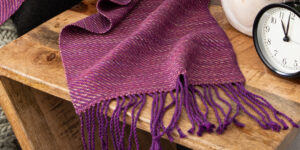
Weaving or knitting
At the last step, the yarn is woven or knitted into sustainable linen fabric. The result of the process is a strong, breathable, and natural textile.
History of linen
Linen is one of the oldest fabrics in the world. It dates back to around 8,000 to 10,000 years ago, long before modern clothing existed.
It all started in ancient Egypt, where linen was very special. Egyptians used it to make clothes and also to wrap mummies because they believed it was pure and clean. It plays an important role in preserving the bodies, and it also lasts thousands of years in a tomb.
Later, in ancient Greece and Rome, people wore linen to stay cool in hot weather. During the Middle Ages in Europe, European linen clothing became common in homes. People used it for clothes, bedding, and tablecloths. In fact, most linen was made by hand in small villages.
In the 1700s and 1800s, machines made linen easier to produce. But soon, cotton became more popular, and then linen started to lose its place.
In the 1900s, synthetic fabrics like polyester, rayon, and nylon became popular. They were cheaper, didn’t wrinkle as much, and were easily available, but not as natural or breathable.
Today, linen is making a comeback. People are choosing it again because of its great properties.
5 properties of linen fabric
- Antibacterial, antifungal, and hypoallergenic
Linen naturally fights off bacteria. Bacteria don’t grow easily on it. The fabric stays fresher and cleaner for longer. Since odors are often caused by bacteria, linen also reduces the unpleasant smells.
Moreover, linen is hypoallergenic, making it a great choice for people with sensitive skin or allergies. Because it resists the growth of bacteria like dust mites and mold. It’s gentle and chemical-free nature. It is safe for everyday use, like home accessories, clothing, bedding, and many more.
- Sustainable and biodegradable
Linen is both sustainable and biodegradable, which makes it an eco-friendly fabric. Unlike synthetic materials that take hundreds of years to break down, linen comes from the flax plant and naturally decomposes in just a few weeks.
- Moisture-wicking and dries quickly
Linen has excellent moisture-wicking properties that can absorb sweat and quickly release it into the air. Because of this, the fabric keeps you dry and comfortable, even in hot or humid weather. It also has properties of quick drying, so the fabric doesn’t stay wet for long.
- Thermoregulating and breathable
Linen keeps your body at a comfortable temperature. When it is hot, it allows air to flow through the fabric, which keeps you cool. In cooler weather, it provides insulation to keep you warm. Because of this natural temperature control, it is comfortable to use all year round.
Is linen breathable? Yes! Linen is made from natural flax fibers that have a loose weave and hollow structure that allows air to pass through easily.
- Durable and machine washable
Linen is strong and lasts a long time. It can also be washed in a washing machine, as most linen fabrics are machine washable. Even after many washes, it stays nice and does not lose its shape. In fact, it often feels softer and more comfortable.
4 main types of linen fabric
- Plain woven linen
Plain woven linen is made using a simple over-and-under weaving pattern, which gives it a smooth texture. It is lightweight, breathable, and durable. The plain weave allows air to pass through easily, which makes it comfortable to wear in warm weather.
- Damask linen
Damask linen is woven on a jacquard loom. It is a special machine that can weave complex and detailed patterns like flowers, swirls, or geometric shapes. The fabric has a tight weave that provides smooth textures. That is why the fabric, such as tablecloths, kitchen towels, and napkins, is used in restaurants to decorate the tables.
- Loosely woven linen
There are tiny gaps between the threads, which make the fabric feel light, airy, and very breathable. Because of its open texture, it is used for light summer clothing, scarves, or curtains.
- Sheet linen
Sheeting linen has a heavier weight and looser weave. The fabric is soft to the touch and also durable. Due to its softness, it can be used in bedding, cushion covers, and pillowcases. It usually has a tighter weave, which makes it smooth on your skin. It is also breathable and long-lasting, so it keeps you cool and comfortable while you sleep.
Conclusion
We hope you have now gotten a clearer picture of the sustainable linen fabric. As you know, it is one of the oldest and most natural fabrics in the world. Even though it was replaced by cheaper synthetic fabrics for a while, many people are now going back to using linen because of its amazing qualities and properties. Instead of using many products made from synthetic materials, one linen item can do the job. It’s more durable and also reduces the carbon footprint.
Are you searching for great-quality natural products and fabrics?
At Green Tailor, we are dedicated to providing natural fabrics and products that are ready to dye, safe for you, and also better for the planet. We aim to help people choose better options, and anyone can access our sustainable fabrics and products easily because we ship worldwide with NO MOQ.
Moreover, all our linen fabrics are OEKO-TEX certified, and organic cotton fabrics are GOTS certified. You can trust that every product from us is made responsibly and meets global safety standards.
For more information about our natural products and fabrics, feel free to contact us at [email protected].
